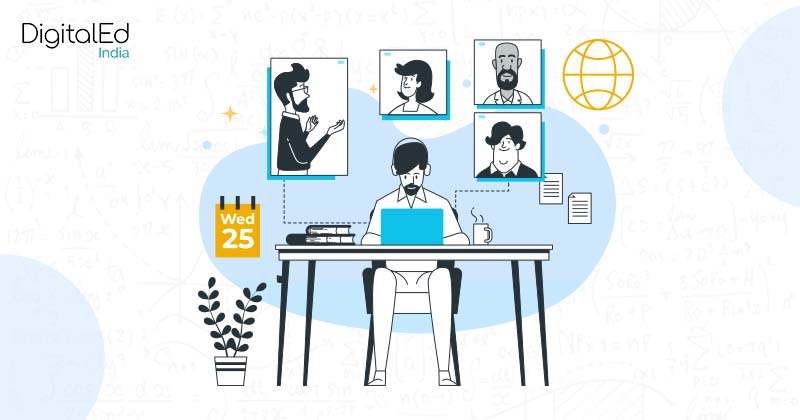Active Learning: The Ultimate Guide for Better Student Success
When Charles Bonwell and James Eison published their study titled ‘Active Learning: Creating Excitement in the Classroom’ in 1991 detailing the needs for active student engagement in classrooms, the complete educational community agreed on its importance.

The core principle behind Active Learning was that if a student is allowed to develop her own understanding of certain concepts, she would be able to retain it for a lot longer. The last three decades have thrown lights on various practices and methodologies that can allow instructors to implement active learning practices in the traditional classroom ecosystem and these methodologies have also factored in the technological advancements that we have seen.
During the past years, we have seen instructors try out various activities like nature walks, class debates, asking question in the middle of a class some of which have undoubtedly become common practice now days. These activities not only help students develop creative and critical thinking but even prevent them from losing interest during a long day of learning. They simply make not just effective but more fun.
Earlier active learning practices included group discussion and projects, letting students struggle through complex solutions, peer-to-peer learning, and in some cases, real-life experiments.
Let’s try and see how these activities aimed at increasing student learning outcomes:
- Group discussions and projects: The logic behind group activities was extremely simple. These allowed students to be able to share and debate different viewpoints, look at a topic from each other’s perspective and arrive at a mutually agreed conclusion.
- Letting students struggle through complex solutions: This allows students to solve complex problems by themselves without the instructor’s intervention and thus the concepts used to solve these problems would come more naturally to the student.
- Peer-to-peer learning: This approach made it easier for students who were hesitant or embarrassed in asking questions to their instructors as learning now just felt like talking to a peer. Also, students who take the lead in explaining concepts to their peers help them to understand concepts more clearly.
- Real-life experiments: From science to consumer behavior, if students were able to validate any concept that they were learning using things around them, they would be able to understand it better and retain it for longer.
Sure these techniques did have very clear advantages but these took longer to implement in a classroom and as the curriculum started increasing, it became more and more difficult for instructors to find opportunities to incorporate more active learning practices and also manage their course schedule.
The last decade has seen immense technological advancements that can definitely aid instructors to come up with newer active learning practices or even cover existing practices in lesser time.
Let’s take a look at a few active learning practices that can be incorporated into existing classrooms that will improve learner outcomes.
- Game-Based Learning: With the ever-evolving age of technology, instructors now have access to various games and computer simulations that they can show to their students within the classroom.
- Automated Quizzes: The pandemic saw this methodology being practiced very extensively as instructors would use Google forms or even Kahoot to have short quizzes daily to ensure that students were paying attention during the class.
- Group projects: With students remaining connected to each other through the day, it makes it extremely easy to have group projects where students can even utilize the time outside the classroom for preparation.
- Role-playing: The immediate access to information makes this a very effective activity now. You can have students physically see Brutus betraying Julius Caesar or be a part of the discussion for the British surrender terms. This can make things extremely fun for students.
- Feedback: This was and even is an extremely important practice for an instructor to understand if all the extra effort going into creating and deploying these methods is giving the desired results. With technology, it becomes very easy for an instructor to not just tackle feedback but even validate it.
- Online learning tool: With so many resources readily available to the learner, it is extremely important for an instructor to stay on top of what the students access and what they get out of it as well. This deployment should be managed through an online learning tool which can help instructors leverage time outside the classroom too.
Conclusion
Active learning simply allows instructors to engage their students with the subject matter and hence improve the expected learning outcomes. The flexibility that active learning methodologies ensure that are able to engage all kinds of learners (auditory, visual, kinesthetic, and reading learners) and help them all to get the learning outcomes in a way they see best.
Incorporating this level of flexibility into the existing learning practices have become essential as the internet has given the learner access so much information in whatever format she desires. If the learner is not provided this flexibility by the instructor, they will get it themselves which might even have an adverse effect due to the lack of consistency in accessing resources independently.
The pandemic era of education ensured that instructors had to go the extra mile to engage students in a virtual classes but that doesn’t stop with the resumption of in-person classes. The learners have come a long way since Active Learning was coined in 1991 and instructors would need to continue coming up with new methods and practices in the ever-changing education landscape to allow for improved student success.
One Reply to “Active Learning: The Ultimate Guide for Better Student Success”
Please ,give us more information